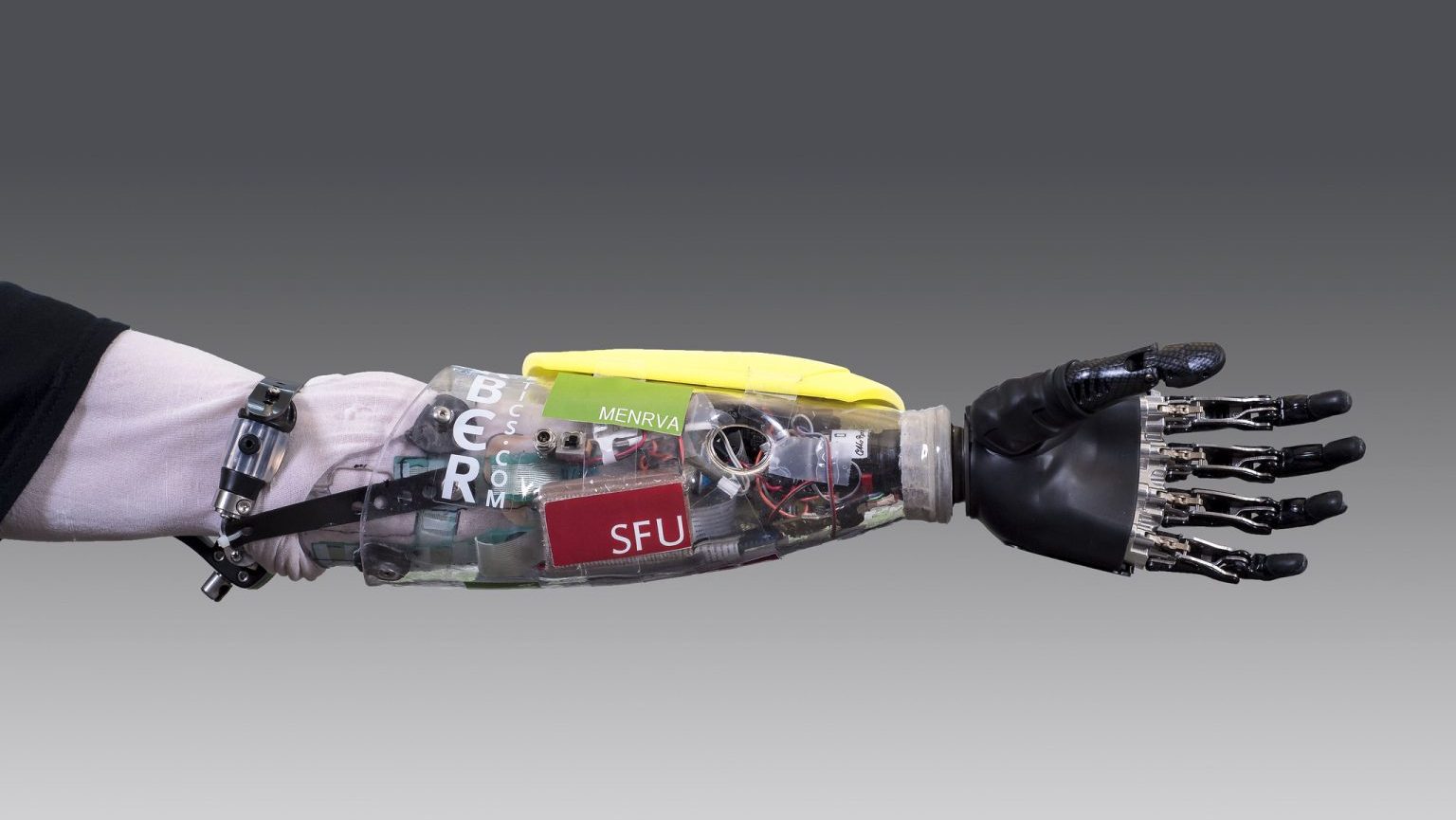Thought-Controlled Prosthetics Are No Longer Fantasy

It sounds like the stuff of science fiction, but a thought-controlled arm (or “neural prosthetic”) has been developed and tested in California. The result of a collaboration among Caltech, Keck Medicine, and the Rancho Los Amigos National Rehabilitation Center, the artificial limb was tested by Erik Sorto, who was paralyzed from the neck down at age 21. Using the device, which functions with the help of an implant in his motor cortex, Sorto successfully used the device to shake hands, lift a glass of water, and to play “rock, paper, scissors” with a partner. He became the first person in the world to receive and use such a device.
“This study has been very meaningful to me. As much as the project needed me, I needed the project. The project has made a huge difference in my life. It gives me great pleasure to be part of the solution for improving paralyzed patients’ lives,” Sorto said.
Sorto received the implant during an August 2013 surgery. He was able to use the prosthetic almost immediately, and over the course of his rehabilitation, mastered increasingly complex tasks.
Even among the many marvels of modern science, this innovation stands out as a particularly awe-inspiring feat, something that would have been widely dismissed as unattainable just a few years ago. It’s hard not to think about how this neural-implant technology will be improved and expanded upon in the future.
If a piece of hardware installed in the brain can be used to manipulate an external device, it provides hope that this technology will one day be able to correct neurological disorders altogether. Perhaps an implant could allow a stroke victim to regain movement, or regulate a patient’s depression. Maybe quadriplegics like Sorto will be able to not only control prosthetics, but also enjoy restored use of their natural limbs.
Right now, that’s a flight of fancy that’s far more fiction than science. But one of the great things about technological innovation is that, in addition to providing tangible benefits in the present, it gives us reason to be optimistic about breakthroughs yet to come. It allows us to be bold and ambitious in setting goals for the future, and the scientists behind’s Sorto’s arm have certainly raised the bar.
Visit Science Daily for more, and check out David Scadden‘s take on the future of stem cells.





